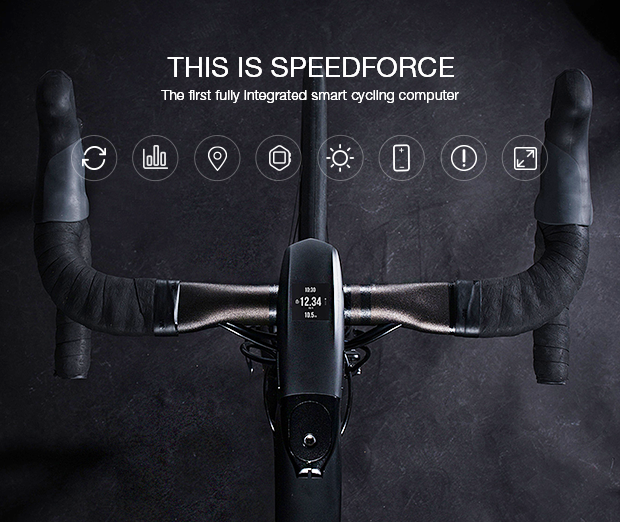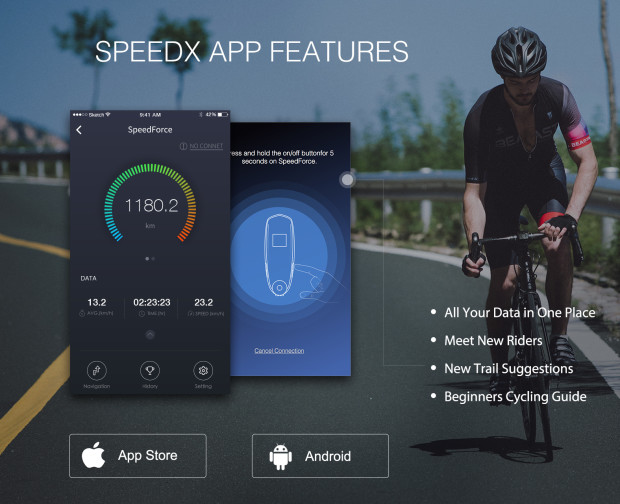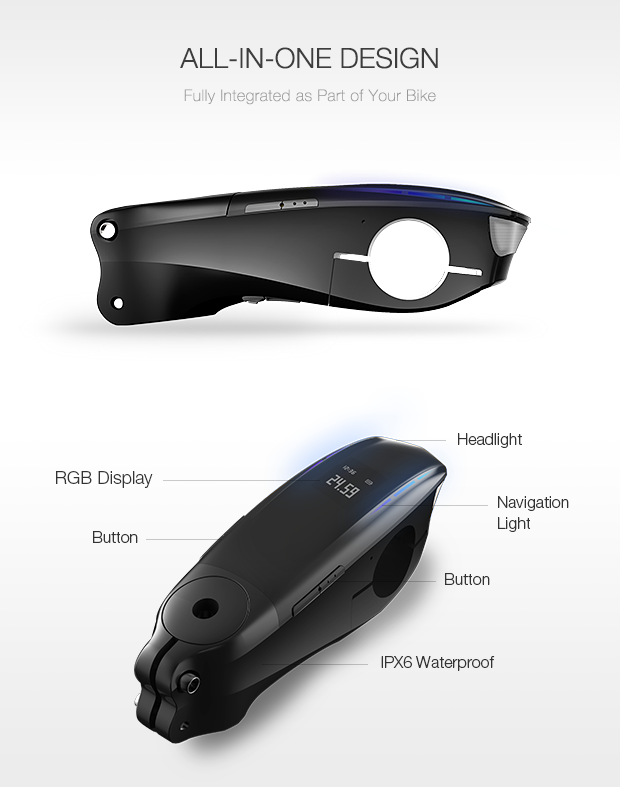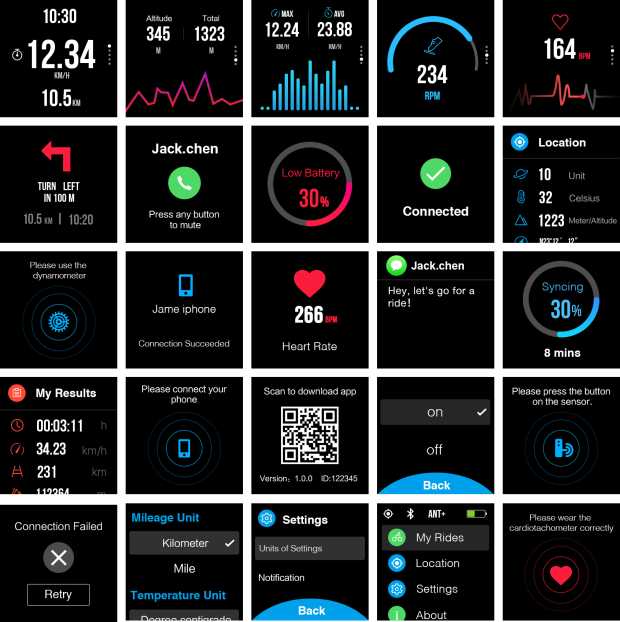SpeedForce : Turns Your Bicycle into SmartCycle
Well Fitness is a major trend going on in the technology world , every platform is offering a fitness tracking either with the software or hardware.While every mobile OS has a fitness app for tracking and monitoring , but it isn't accurate to that extend. So the fitness bands come in play, which offer more accuracy and more tracking of the body. And now the it's getting more specific , like SpeedForce , a device for the cycling enthusiast.

SpeedForce, is a cycling computer which is fitted in your bicycle by replacing the stem of the bicycle.Cycling computer + GPS + headlight all built in one is a product , SpeedForce designed to meet all the things required by a cyclist. SpeedForce has a shockproof and IPX6 water-resistant body and is powered by a removable lithium-ion battery, which should be good for up to 40 hours of use per charge. That figure will be less if the 150-luminous headlight is used.
Using the ANT+ wireless protocol, the GPS-equipped SpeedForce computer communicates with included wheel and pedal sensors to ascertain speed and cadence. It also uses Bluetooth to link up with a dedicated app on the user's iOS or Android smartphone.The app provides a lot more functionality , like for beginners it has a guided tour as well has own cycling community social network , which give leader-boards,city guides,cycling and training advice. It also helps user's to communicate with other cyclist enthusiast as well as allows user's to share photo's as well.
With a built-in GPS chip that syncs with your phone’s GPS, SpeedForce has turn signal indicators that light up to tell you where to turn next without needing to glance at your smartphone.Another method is off-the-road , when you pre-plan the route and push it to SpeedForce. Afterwards, even without your phone, SpeedForce will follow the submitted route.

Sensors on the back of the pedals and wheels work in tandem to provide precise data to identify behaviors and provide recommendations to correct them, like changing gears or pedaling faster, to improve the overall health and safety of the rider. Over time, SpeedForce will recommend training programs and challenges to improve overall performance.

It has a 1.6-inch full-color transflective screen which has high resolution and has 8 different screens and can even give you phone and text notifications on it.You can toggle the screen's with the side button on the device.

SpeedForce comes in two versions :- road and mountain bike . Both the road and mountain bike versions of the SpeedForce, which will weigh 350 and 340 grams, respectively. If you're interested in either, the device is currently the subject of an Indiegogo crowdfunding campaign. A pledge of US$149 will get you one, when and if they reach production. The planned retail price is $179.
